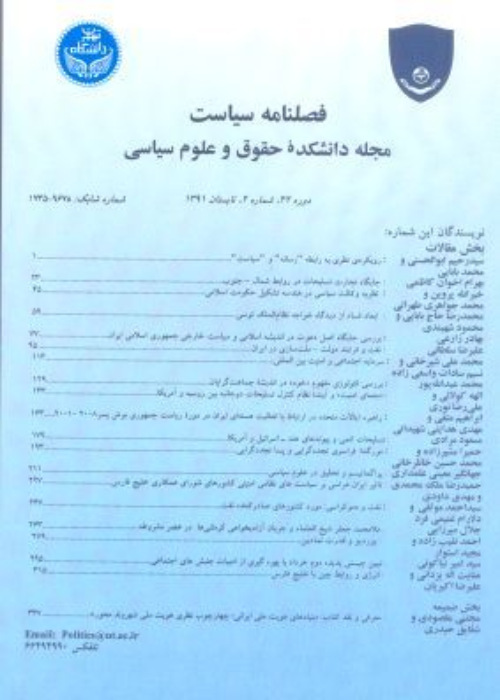The Drivers of Change in the Middle East Security Environment and the Future of Iran's Security
The surrounding environment of the region has a fluid and changing nature, and thus the national security of each of the states in the Middle East depends on understanding the dynamics and reliability of the regional security environment. In recent years, especially after the Arab Spring, the Middle East has seen rapid changes and emerging trends that have influenced regional security, patterns of coalition building, and regional security architecture. The speed, depth and scope of the transformation in the security environment of the Middle East are to such an extent that identifying the effective drivers and understanding the upcoming trends has become one of the significant research topics in political and international studies. Accordingly, the main objectives of the present study are to identify and analyze national, regional, and international drivers of change within the theoretical framework of Buzan's regional security complex (RSC), and find appropriate answers to the following questions: a) What are the drivers of transformation in the security environment of the Middle East; and b) How do these developments influence the future of Iran's security?Remarkable transformation is taking place at three national, regional and international levels. Thus, in the research hypothesis, the authors postulate that the drivers of change in the security environment of the Middle East have a significant impact on Iran’s security. The drivers include the fundamental forces which influence the security environment of the Middle East, and in turn have implications for Iran's security. The drivers which influence regional and national security include the growth of unstable governments, the multiplicity and severity of regional security challenges which had been triggering dangerous competitions between adversaries and rivals (e.g., the escalation of tension in Iran-Saudi relations), the success and failures of coalition building in the Israel-Arab axis with repercussions for Iran's security policies and strategic stability, the redefinition of the roles and interests of the Great Powers in the region which had been leading to the intensification of their rivalries and changes in their military-security doctrines. Trend analysis of qualitative data is used to identify and explain key developments in the Middle East and to understand what the future will look like for Iran’s security. Trends are gradual forces, factors or patterns that cause changes in the desired phenomenon. Macro trends are important and dominant trends that have significant impact on the transformation of the phenomenon in question. Pishrān refers to the major forces that shape the future and consists of several processes that cause changes in the desired phenomenon.The authors organize their analyses and discussions in four parts. In the first section, the research objectives, main concepts and research method are described. In the second part, the concepts of regional security complex (RSC), extraterritorial security environment and regional security are explained. Moreover, they review recent work in security studies which examine the question of how socio-economic and political developments will ultimately affect regional and national security. The third part is dedicated to explaining the national, regional and international drivers and trends that have the ability to transform Iran's security environment. In the final part, they discuss the transformation of the security environment, particularly the transformation in the patterns of regional order and the change in the patterns of confrontation and cooperation among regional states. They also draw attention to the security threats arising from this transformation that affect the security of the region. The findings of the research indicate that the transformation of the regional security system with its new order will lead to the intensification of security threats for Iran. The results might be helpful for the policymakers who are enthusiastic about the task of developing forward-looking strategies to confront the current and future security threats.
- حق عضویت دریافتی صرف حمایت از نشریات عضو و نگهداری، تکمیل و توسعه مگیران میشود.
- پرداخت حق اشتراک و دانلود مقالات اجازه بازنشر آن در سایر رسانههای چاپی و دیجیتال را به کاربر نمیدهد.


